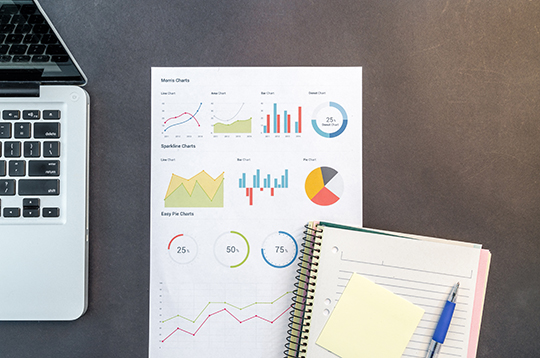Using Data to Make Healthcare & Program Decisions
Topics
Using Data to Make Healthcare & Program Decisions

“Data keeps us alert to what we should be focusing on and who is currently most at risk” - Brenda Hernandez
We all can use data to analyze populations and to determine where to direct resources. By examining data, providers can make informed decisions regarding patient care, and we can recommend policy and program changes.
Different Types of Data
There are vast amounts of data that are currently generated inside and outside of the healthcare arena. For example, healthcare providers use electronic medical records to access extensive patient data, which ultimately improves care quality, increases patient engagement, and decreases patient waiting times.
Many non-profit organizations also use data to improve the health and well-being of the communities they serve. The Human Rights Campaign’sExit Disclaimer Health and Aging Program operates the Healthcare Equality IndexExit Disclaimer, which collects data to evaluate LGBTQ equity and inclusion in healthcare facilities across the country, and to provide cultural competency trainings, which can help improve the quality of healthcare experiences for LGBTQ persons.
There are ongoing federal research programs that guide public health action through the collection of data. For example, National HIV Behavioral Surveillance (NHBS) collects data from in-person interviews about HIV risk factors, such as sex and drug use. According to the CDC, “NHBS is critical for monitoring the impact of the National HIV/AIDS Strategy, which focuses on decreasing HIV incidence, improving linkage to care, and reducing disparities.”
Another example of a federal research program that generates a huge data set is the Behavioral Risk Factor Surveillance System (BRFSS), which collects data from US residents via telephone surveys about many different aspects of their health.
Looking Across Unrelated Data Sets
Given the high volume of data that we currently access, it is important for us to use what data is available and to think outside the box regarding data analysis. Analyzing different sets of data can lead to information that is more accurate and result in even better outcomes. If two data sets find dissimilar statistics about behaviors of the same population, we should examine them together. As an example, both NHBS and BRFSS collect information about sexual orientation and gender identity, but it is possible that the data sets will contain different information about gay-identified men of the same age in the same county, given the fluidity of identity. It is therefore important that we compare the same data from different sources in order to make the best decisions regarding population health.
“Data keeps us alert to what we should be focusing on and who is currently most at risk . We monitor other epidemiological trends - viral hepatitis, opioid use, injection drug use - to prevent new HIV infections,” says Brenda Hernandez, Special Projects Coordinator of the Division of STD Prevention at the Massachusetts Department of Public Health.
We also understand the importance of more focused data on specific populations. “Cancer registries and surveys of cancer incidence do not collect data about sexual orientation or gender identity, leaving LGBT cancer survivors invisible,” says Tari Hanneman, Director of the Health Equality Project at the Human Rights Campaign, in a blog postExit Disclaimer about a National LGBT Cancer Action Plan.
According to Visualizing HealthExit Disclaimer, an online health communication tool, “There is no single best way to present data…it really does depend on what your goals are and what your purpose is, and who you are trying to reach.”
How to Learn More About Data
If you want to explore health-related datasets from across the Federal Government, including hospital discharge data, check out data.gov.
If you want of explore data sources on HIV, check out our page on U.S. statistics.